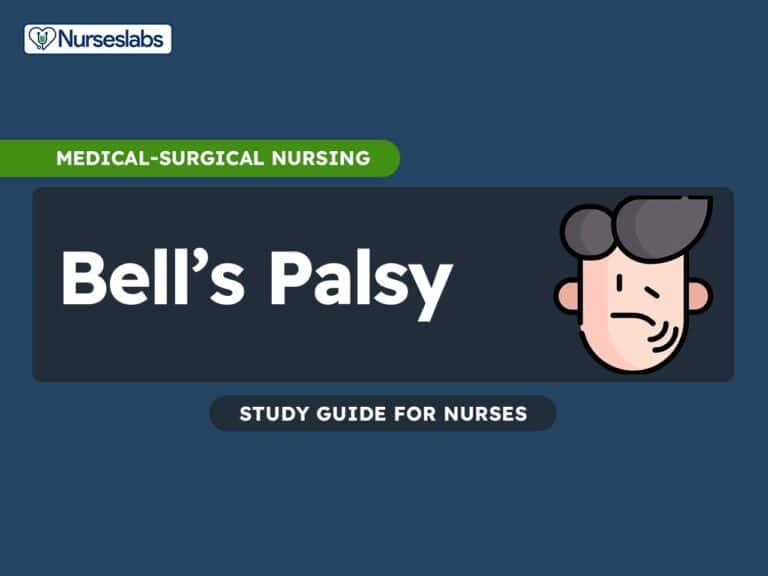Definition
Bell’s palsy is a disease of the seventh cranial nerve (facial nerve) that produces unilateral or bilateral facial weakness or paralysis.
Bell’s palsy is named after Scottish anatomist Charles Bell who first described it.
Cause
- The cause is unknown, but possible causes may include vascular ischemia, viral disease (herpes simplex, herpes zoster), autoimmune disease, or a combination.
Manifestations
- Bell’s palsy may represent a type of pressure paralysis in which ischemic necrosis of the facial nerve causes a distortion of the face, increased lacrimation (tearing), and painful sensations in the face, behind the ear, and in the eye.
- The patient may experience speech difficulties and may be unable to eat on the affected side owing to weakness.
Complications
- Corneal ulcers
- Blindness
- Impaired nutrition
Prognosis
- Most patients recover completely, and Bell’s palsy rarely recurs.
- Bell’s palsy subsides spontaneously with complete recover in 1 to 8 weeks.
Medical Management
The objectives of management are to maintain facial muscle tone and to prevent or minimize denervation with the help of the following:
- Corticosteroid therapy (prednisone) may be initiated to reduce inflammation and edema, which reduces vascular compression and permits restoration of blood circulation to the nerve.
- Early administration of corticosteroids appears to diminish severity, relieve pain, and minimize denervation.
- Facial pain is controlled with analgesic agents or heat applied to the involved side of the face.
- Additional modalities may include electrical stimulation applied to the face to prevent muscle atrophy, or surgical exploration of the facial nerve.
- Surgery may be performed if a tumor is suspected, for surgical decompression of the facial nerve, and for surgical rehabilitation of a paralyzed face.
Nursing Management
Patients need reassurance that a stroke has not occurred and that spontaneous recovery occurs within 3 to 5 weeks in most patients. Teaching patients with Bell’s palsy to care for themselves at home is an important nursing priority.
Teaching Eye Care
Because the eye usually does not close completely, the blink reflex is diminished, so the eye is vulnerable to injury from dust and foreign particles. Corneal irritation and ulceration may occur. Distortion of the lower lid alters the proper drainage of tears. Key teaching points include the following:
- Cover the eye with a protective shield at night.
- Apply eye ointment to keep eyelids closed during sleep.
- Close the paralyzed eyelid manually before going to sleep.
- Wear wraparound sunglasses or goggles to decrease normal evaporation from the eye.
Teaching About Maintaining Muscle Tone
- Show patient how to perform facial massage with gentle
- upward motion several times daily when the patient can tolerate the massage.
- Demonstrate facial exercises, such as wrinkling the forehead,
- blowing out the cheeks, and whistling, in an effort to prevent muscle atrophy.
- Instruct patient to avoid exposing the face to cold and drafts.
Diet & Nutrition
- Instruct patient to chew on the unaffected side of his mouth.
- Provide soft and nutritionally balanced diet. Eliminate hot fluids and foods.
- Give frequent mouth care, being particularly careful to remove residues of food that collects between the cheeks and gums.
References
- Bell’s Palsy via Wikpedia
- Professional Guide to Diseases
- Image: kaiserpermanente.org

Which part should a bell palsy patient chew gum on,Is it the affected part or the un affected part
Unaffected side
This is wonderful and we’ll explained
the unaffected part
i like the notes they are very understood and enjoyable to read thanks
Hi Kiconco,
Thank you for your positive feedback! I’m pleased to hear that the notes on Bell’s Palsy were clear and enjoyable for you. Our goal is to make complex topics accessible and engaging for all our readers. Let us know if you have questions or topics you’d like covered. Stay curious and happy reading!